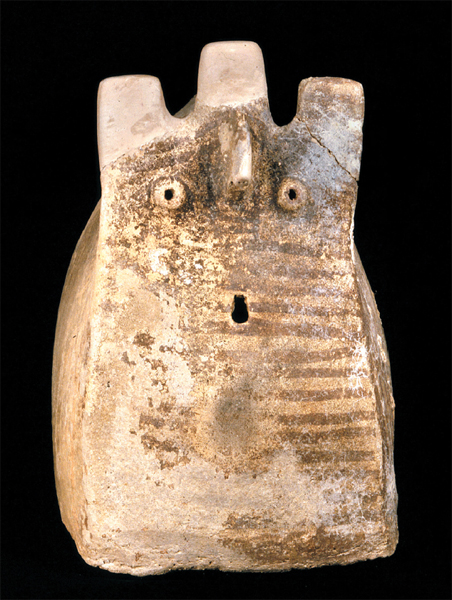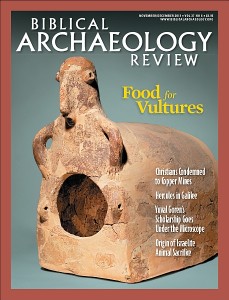Excarnation: Food For Vultures
Unlocking the mysteries of Chalcolithic ossuaries

For nearly a century before the Romans destroyed the Temple in 70 C.E., Jews, especially in the Jerusalem area, would inter the bones of their deceased in stone boxes, or ossuaries, about 2 feet long and a foot high. The ossuary had to be long enough to accommodate the longest bone in the body, usually the femur. Children’s ossuaries were accordingly shorter. Many of the ossuaries were inscribed or decorated. Hundreds of them have been recovered.
Interment in the ossuary involved only the bones and, for this reason, would not occur until about a year after an individual’s death, when the flesh had desiccated and fallen away from the corpse, leaving only the bones. For the first year the deceased was interred in a loculus (plural loculi; Hebrew, koch, plural kochim), a 6-foot-long hole or cavity carved into the wall of a burial cave. There (or on a stone bench in the cave), the body of the deceased would repose until it was ready for the ossuary.
Already a library member? Log in here.
Institution user? Log in with your IP address.

